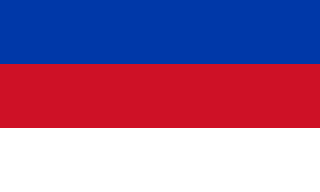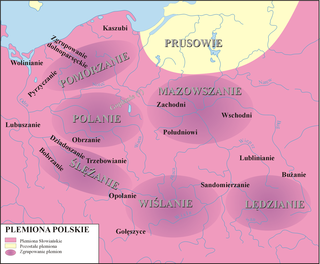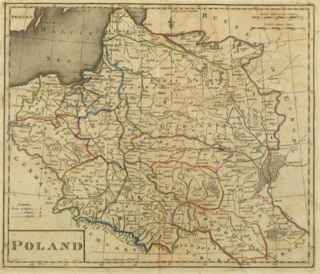Related Research Articles

Mieszko I was Duke of Poland from 960 until his death in 992 and the founder of the first unified Polish state, the Civitas Schinesghe. A member of the Piast dynasty, he was the first Christian ruler of Poland and continued the policies of both his father Siemomysł and grandfather Lestek, who initiated a process of unification among the Polish tribes and the creation of statehood.

Sorbs are a West Slavic ethnic group predominantly inhabiting the parts of Lusatia located in the German states of Saxony and Brandenburg. Sorbs traditionally speak the Sorbian languages, which are closely related to Czech, Polish, Kashubian, Silesian, and Slovak. Upper Sorbian and Lower Sorbian are officially recognized minority languages in Germany.

Lusatia is a historical region in Central Europe, territorially split between Germany and modern-day Poland. Lusatia stretches from the Bóbr and Kwisa rivers in the east to the Pulsnitz and Black Elster rivers in the west, and is located within the German states of Saxony and Brandenburg as well as in the Polish voivodeships of Lower Silesia and Lubusz. Major rivers of Lusatia are the Spree and the Lusatian Neisse, which defines the border between Germany and Poland. The Lusatian Mountains of the Western Sudetes separate Lusatia from Bohemia in the south. Lusatia is traditionally divided into Upper Lusatia, the hilly southern part, and Lower Lusatia, the flat northern part.

The Polans or Polians, also known as Polanians, Polianians, and Eastern Polans, were an East Slavic tribe between the 6th and the 9th century, which inhabited both sides of the Dnieper river from Liubech to Rodnia and also down the lower streams of the rivers Ros', Sula, Stuhna, Teteriv, Irpin', Desna and Pripyat.

The Radimichs were an East Slavic tribe of the last several centuries of the 1st millennium, which inhabited upper east parts of the Dnieper down the Sozh and its tributaries. The name probably derives from the name of the forefather of the tribe - Radim. According to Russian chronicle tradition, "... but there were Radimichs from the Lechites family, who came and settled here and paid tribute to Rus, and the wagon was carried to the present day". However, in the scientific literature, there is no consensus on the ethnicity of the Radimichs. Archaeological evidence indicates that this tribal association had a mixed Slavic-Baltic origin.

Lech, Czech and Rus refers to a founding legend of three Slavic brothers who founded three Slavic peoples: the Poles, the Czechs, and the East Slavs. The three legendary brothers appear together in the Wielkopolska Chronicle, compiled in the early 14th century. The legend states that the brothers, on a hunting trip, followed different prey and thus travelled in different directions: Lech in the northwest, Czech in the west, and Rus in the northeast. There are multiple versions of the legend, including several regional variants throughout West Slavic, and to lesser extent, other Slavic countries that mention only one or two brothers. The three also figure into the origin myth of South Slavic peoples in some legends. Their stories are often, to some extent as well, used as a myth to understand the eventual foundation of the Polish, Czech and East Slavic states, in accordance with the legend.

Polabian Slavs, also known as Elbe Slavs and more broadly as Wends, is a collective term applied to a number of Lechitic tribes who lived scattered along the Elbe river in what is today eastern Germany. The approximate territory stretched from the Baltic Sea in the north, the Saale and the Limes Saxoniae in the west, the Ore Mountains and the Western Sudetes in the south, and Poland in the east.

"Polish tribes" is a term used sometimes to describe the tribes of West Slavic Lechites that lived from around the mid-6th century in the territories that became Polish with the creation of the Polish state by the Piast dynasty. The territory on which they lived became a part of the first Polish state created by duke Mieszko I and expanded at the end of the 10th century, enlarged further by conquests of king Bolesław I at the beginning of the 11th century.

The Veleti, also known as Veletians, Wilzi, Wielzians, and Wiltzes, were a group of medieval Lechitic tribes within the territory of Western Pomerania, related to Polabian Slavs. They had formed together the Confederation of the Veleti, also known as the Union of the Veleti, a loose monarchic confederation of the tribes. Said state existed between the 6th and 10th centuries, after which, it was succeeded by the Lutician Federation.

Lower Lusatia is a historical region in Central Europe, stretching from the southeast of the German state of Brandenburg to the southwest of Lubusz Voivodeship in Poland. Like adjacent Upper Lusatia in the south, Lower Lusatia is a settlement area of the West Slavic Sorbs whose endangered Lower Sorbian language is related to Upper Sorbian and Polish.

Upper Lusatia is a historical region in Germany and Poland. Along with Lower Lusatia to the north, it makes up the region of Lusatia, named after the Slavic Lusici tribe. Both parts of Lusatia are home to the West Slavic minority group of the Sorbs.

Lower Silesia is a historical and geographical region mostly located in Poland with small portions in the Czech Republic and Germany. It is the western part of the region of Silesia. Its largest city is Wrocław.

The West Slavs are Slavic peoples who speak the West Slavic languages. They separated from the common Slavic group around the 7th century, and established independent polities in Central Europe by the 8th to 9th centuries. The West Slavic languages diversified into their historically attested forms over the 10th to 14th centuries.

The Milceni or Milzeni were a West Slavic tribe, who settled in the present-day Upper Lusatia region. They were first mentioned in the middle of the 9th century AD by the Bavarian Geographer, who wrote of 30 civitates which possibly had fortifications. They were gradually conquered by Germans during the 10th century. Modern descendants of the Milceni are the Sorbs of the Free State of Saxony, Germany.

The ethnonyms for the Poles (people) and Poland include endonyms and exonyms. Endonyms and most exonyms for Poles and Poland derive from the name of the West Slavic tribe of Polans (Polanie), while in some languages the exonyms for Poland to derive from the name of another tribe – the Lendians (Lędzianie).
Lechites, also known as the Lechitic tribes, is a name given to certain West Slavic tribes who inhabited modern-day Poland and eastern Germany, and were speakers of the Lechitic languages. Distinct from the Czech–Slovak subgroup, they are the closest ancestors of ethnic Poles and of Pomeranians, Lusatians and Polabians.

The Silesians were a tribe of West Slavs, specifically of the Lechitic/Polish group, inhabiting territories of Lower Silesia, near Ślęża mountain and Ślęza river, on both banks of the Oder, up to the area of modern city of Wrocław. They were the first permanent inhabitants of the site of Wrocław where they build a fort on Ostrów Tumski in the 9th century or earlier, which at the time was an island on the Oder.

The Oder is a river in Central Europe. It is Poland's second-longest river in total length and third-longest within its borders after the Vistula and its largest tributary Warta. The Oder rises in the Czech Republic and flows 742 kilometres (461 mi) through western Poland, later forming 187 kilometres (116 mi) of the border between Poland and Germany as part of the Oder–Neisse line. The river ultimately flows into the Szczecin Lagoon north of Szczecin and then into three branches that empty into the Bay of Pomerania of the Baltic Sea.

The Lutici or Liutizi(known by various spelling variants) were a federation of West Slavic Polabian tribes, who between the 10th and 12th centuries lived in what is now northeastern Germany. Four tribes made up the core of the federation: the Redarians, Circipanians (Circipani), Kessinians and Tollensians (Tholenzi). At least in part, the Lutici were a continuation of the Veleti. In contrast to the former and the neighboring peoples, the Lutici were not led by a Christian monarch or duke, rather power was asserted through consensus formed in central assemblies of the social elites, and the Lutici worshipped nature and several deities. The political and religious center was Radgosc.
Doxani was a Polabian Slavic tribe, that in the 10th century, lived in the region of Brandenburg, in Central Europe, which now is part of Germany. While the exact location of their settlements remains unknown, it is known that they inhabited areas of Havel river, and the upper portion of Dosse river, probably to the east of the settlements of Zamzizi tribe.
References
- 1 2 Lech Leciejewicz: Słowianie zachodni: Z dziejów tworzenia się średniowiecznej Europy. Wrocław: Zakład Narodowy im. Ossolińskich, 1989, p. 62. ISBN 83-04-02690-2. (in Polish)
- 1 2 3 Lech Tyszkiewicz: Zachodni sąsiedzi plemion śląskich. In: Śląski Kwartalnik Historyczny Sobótka, issue 19. 1964. p. 3-17. (in Polish)